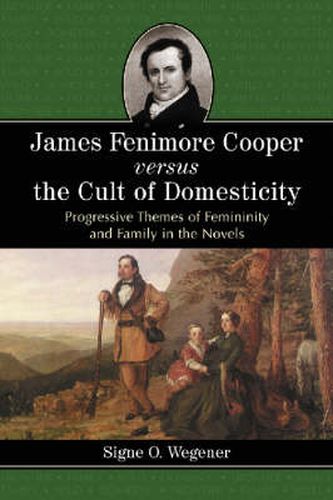Readings Newsletter
Become a Readings Member to make your shopping experience even easier.
Sign in or sign up for free!
You’re not far away from qualifying for FREE standard shipping within Australia
You’ve qualified for FREE standard shipping within Australia
The cart is loading…






This title is printed to order. This book may have been self-published. If so, we cannot guarantee the quality of the content. In the main most books will have gone through the editing process however some may not. We therefore suggest that you be aware of this before ordering this book. If in doubt check either the author or publisher’s details as we are unable to accept any returns unless they are faulty. Please contact us if you have any questions.
Between 1820 and 1860 a set of established cultural values deemed the
Cult of Domesticity
sought to shape the private and public lives of individuals in a rapidly changing American society. Promoting the ideals of conformity in religious, domestic and personal development, the cult was particularly concerned with maintaining a status quo of piety, purity, obedience and domesticity in 19th century female behavior. While a number a female writers responded through literature to the social standards they were urged to emulate, the prominent male writer James Fenimore Cooper reacted as well, addressing the predominant cultural climate through texts that establish women as an integral part of the plot line. This text provides a comprehensive discussion of James Fenimore Cooper’s view of family dynamics and explores the way in which he strove to simultaneously present and critique the forces shaping the social development of the nation.~ The study places 10 relevant Cooper novels within the context of popular literary works by 19th century female writers Lydia Maria Child, Catherine Maria Sedgwick, Susan Warner and Maria Cummins to demonstrate how Cooper approaches issues of Victorian domesticity and how his representations compare to those crafted by the contemporary women writers. Opening chapters discuss why Cooper chose the women’s fiction genre as his vehicle and presents an overview of the
Cult of Domesticity
in fiction and non-fiction, delineating the origins and effects of 19th century domestic life. Remaining chapters address the role of the mother, the father and the central daughter figure in domestic fiction.
$9.00 standard shipping within Australia
FREE standard shipping within Australia for orders over $100.00
Express & International shipping calculated at checkout
This title is printed to order. This book may have been self-published. If so, we cannot guarantee the quality of the content. In the main most books will have gone through the editing process however some may not. We therefore suggest that you be aware of this before ordering this book. If in doubt check either the author or publisher’s details as we are unable to accept any returns unless they are faulty. Please contact us if you have any questions.
Between 1820 and 1860 a set of established cultural values deemed the
Cult of Domesticity
sought to shape the private and public lives of individuals in a rapidly changing American society. Promoting the ideals of conformity in religious, domestic and personal development, the cult was particularly concerned with maintaining a status quo of piety, purity, obedience and domesticity in 19th century female behavior. While a number a female writers responded through literature to the social standards they were urged to emulate, the prominent male writer James Fenimore Cooper reacted as well, addressing the predominant cultural climate through texts that establish women as an integral part of the plot line. This text provides a comprehensive discussion of James Fenimore Cooper’s view of family dynamics and explores the way in which he strove to simultaneously present and critique the forces shaping the social development of the nation.~ The study places 10 relevant Cooper novels within the context of popular literary works by 19th century female writers Lydia Maria Child, Catherine Maria Sedgwick, Susan Warner and Maria Cummins to demonstrate how Cooper approaches issues of Victorian domesticity and how his representations compare to those crafted by the contemporary women writers. Opening chapters discuss why Cooper chose the women’s fiction genre as his vehicle and presents an overview of the
Cult of Domesticity
in fiction and non-fiction, delineating the origins and effects of 19th century domestic life. Remaining chapters address the role of the mother, the father and the central daughter figure in domestic fiction.